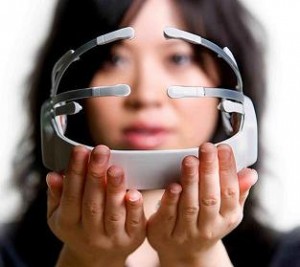
More evidence that low-calorie sweeteners are bad for your health
Studies show that artificial sweeteners can raise the risk of hypertension, metabolic syndrome, type 2 diabetes and heart disease, including stroke.

Natural Health News —New research by biomedical engineers at the University of Minnesota shows that people who practice yoga and meditation long term can learn to control a computer with their minds faster and better than people with little or no yoga or meditation experience.
It might not be what the ancient yoga masters would have envisaged for the practice, but it nevertheless could have major implications for treatments of people who are paralysed or have neurodegenerative diseases.
The research published in the journal Technology involved a total of 36 participants. One group of 12 had at least one year of experience in yoga or meditation at least two times per week for one hour. The second group included 24 healthy participants who had little or no yoga or meditation experience.
Both groups were new to systems using the brain to control a computer. Both groups participated in three, two-hour experiments over four weeks in which they wore a high tech, non-invasive cap over the scalp that picked up brain activity. The participants were asked to move a computer cursor across the screen by imaging left or right hand movements.
The participants with yoga or meditation experience were twice as likely to complete the brain-computer interface task by the end of 30 trials and learned three times faster than their counterparts for the left-right cursor movement experiments.
“In recent years, there has been a lot of attention on improving the computer side of the brain-computer interface but very little attention to the brain side,” said lead researcher Bin He, a biomedical engineering professor in the University of Minnesota’s College of Science and Engineering and director of the University’s Institute for Engineering in Medicine. “This comprehensive study shows for the first time that looking closer at the brain side may provide a valuable tool for reducing obstacles for brain-computer interface success in early stages.”
Help for those with neurological diseases & more
Researchers have been increasingly focused on finding ways to help physically disabled individuals who are paralyzed, have lost limbs, or suffer from diseases such as ALS or cerebral palsy. In these cases, brain function remains intact, but these people have to find a way to bypass muscular control to move a wheelchair, control an artificial limb, or control other devices.
Professor He gained international attention in 2013 when members of his research team were able to demonstrate flying a robot with only their minds. However, they found that not everyone can easily learn to control a computer with their brains. Many people are unsuccessful in controlling the computer after multiple attempts.
A consistent and reliable EEG brain signal may depend on an undistracted mind and sustained attention. Meditators have shown more distinctive EEG patterns than untrained participants, which may explain their success.
Professor He said he got the idea for the study more than five years ago when he began his brain-computer interface research and noticed one woman participant who was much more successful than other participants at controlling the computer with her brain. The woman had extensive experience with yoga and mediation.
The next step for He and his team is to study a group of participants over time who are participating in yoga or meditation for the first time to see if their performance on the brain-computer interface improves.
“Our ultimate goal is to help people who are paralysed or have brain diseases regain mobility and independence,” He said. “We need to look at all possibilities to improve the number of people who could benefit from our research.”

Please subscribe me to your newsletter mailing list. I have read the
privacy statement